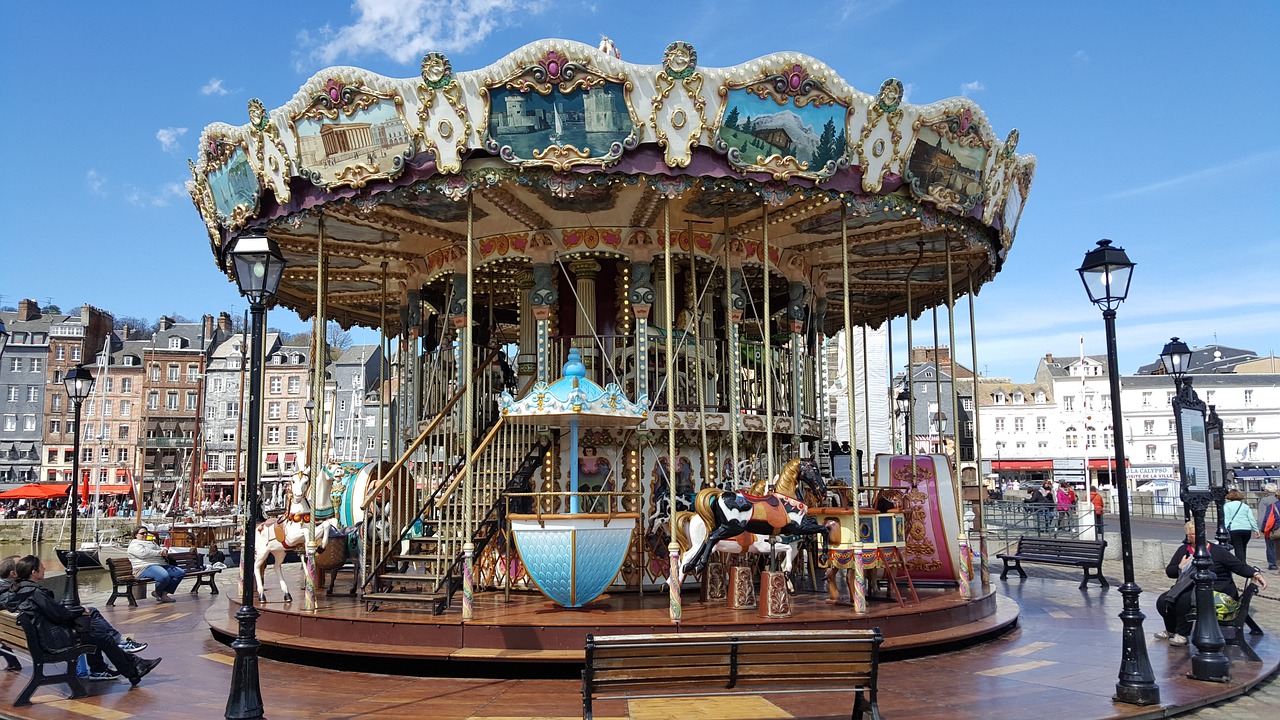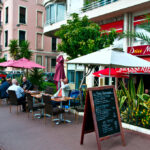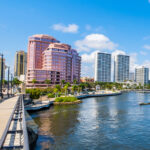Nestled along the picturesque coastline of Normandy, France, the port city of Le Havre stands as a testament to resilience, rebirth, and the enduring spirit of human creativity. Known for its rich maritime heritage, innovative architecture, and vibrant cultural scene, Le Havre has emerged from the ashes of World War II to become a thriving city that beckons travelers from all corners of the globe. In this guide, we will embark on a journey to explore the multifaceted charm of Le Havre, uncovering its history, art, culture, and much more.
A Brief Historical Overview
To truly appreciate Le Havre’s unique character, it is essential to delve into its history. The city’s name, which means “the harbor” in French, reflects its primary role as a significant maritime gateway. Le Havre’s strategic location on the English Channel made it a vital trading hub as far back as the Middle Ages. However, it was the 16th-century monarch King Francis I who initiated the development of the city into a proper harbor.
The 17th century brought the construction of fortifications and further expansion of the port, solidifying its position as a critical naval base for France. Over the centuries, Le Havre continued to play a pivotal role in maritime trade and warfare, with its fortunes closely tied to the sea.
The Destruction and Rebirth
Despite its enduring maritime significance, Le Havre suffered a devastating blow during World War II. In September 1944, the city became a battleground as Allied forces sought to liberate France from German occupation. The fierce fighting and intense bombardments led to the near-total destruction of Le Havre. When the war finally ended, the city lay in ruins, a symbol of the horrors of war.
In the aftermath, Le Havre faced a daunting challenge: to rebuild and reinvent itself. Architect Auguste Perret was entrusted with this monumental task. What followed was a visionary urban reconstruction project that would forever change the city’s landscape. Perret’s innovative use of reinforced concrete led to the creation of a new, modernist Le Havre, earning it recognition as a UNESCO World Heritage Site in 2005.
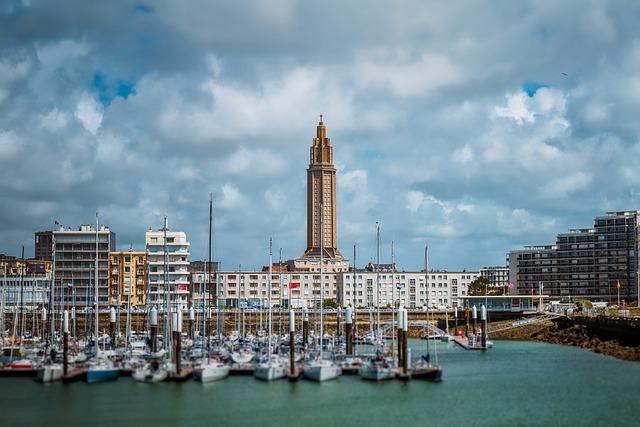
Perret’s Masterpiece: A City Reimagined
One cannot discuss Le Havre without acknowledging the transformative influence of Auguste Perret’s architectural vision. The post-war reconstruction project he spearheaded sought to strike a balance between preserving the city’s historical character and embracing the possibilities of modern design.
Central to Perret’s vision was the concept of a “radiant city,” characterized by wide, tree-lined avenues, open spaces, and an abundance of natural light. The most iconic symbol of this vision is the Saint Joseph Church, a stunning example of contemporary sacred architecture with its soaring, lantern-like tower. It serves as a beacon of hope and renewal, both for the city’s residents and visitors alike.
Beyond the church, Perret’s legacy is evident throughout Le Havre. The city’s unique grid layout, characterized by its concrete apartment blocks and spacious squares, reflects his commitment to modernism and functionality. Today, wandering through the streets of Le Havre feels like stepping into a living architectural museum, where the past and future coexist harmoniously.
A Cultural Oasis
Le Havre’s artistic and cultural scene is as vibrant as its architecture. The city boasts an impressive array of museums, galleries, and cultural institutions that celebrate its maritime heritage and contemporary creativity.
One of the must-visit attractions is the MuMa – André Malraux Modern Art Museum. Situated along the waterfront, this museum houses an exceptional collection of Impressionist paintings, including works by renowned artists such as Monet, Renoir, and Dufy. The museum’s location offers breathtaking views of the harbor and the sea, providing a serene backdrop for art enthusiasts.
For those interested in maritime history, the Maritime Museum offers an immersive experience that delves into Le Havre’s seafaring past. Visitors can explore the exhibits that showcase everything from ship models to navigational instruments, gaining insight into the city’s maritime traditions.
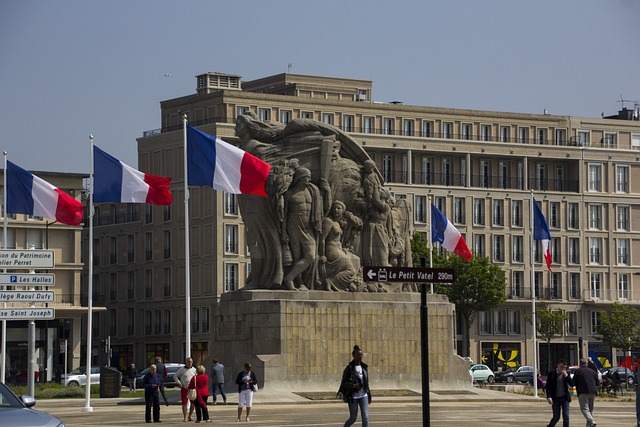
Culinary Delights
No visit to Le Havre would be complete without savoring its culinary offerings. The city’s proximity to the sea ensures an abundance of fresh seafood, and Le Havre’s restaurants are renowned for their seafood platters, oysters, and seafood stews. Dining in one of the charming waterfront bistros is not only a gastronomic delight but also an opportunity to soak in the city’s maritime atmosphere.
Additionally, Le Havre boasts a thriving farmers’ market scene. The Saint-François Market is a bustling hub of local produce, artisanal goods, and regional specialties. It’s the perfect place to sample Normandy’s famous cheeses, ciders, and apple-based desserts.
Festivals and Events
Throughout the year, Le Havre hosts a variety of festivals and events that showcase its vibrant culture and artistic spirit. One of the highlights is the annual Ouest Park Festival, a celebration of music and contemporary arts. This multi-day event features an eclectic lineup of musical acts, art installations, and cultural performances, drawing both locals and tourists to the city’s vibrant atmosphere.
Le Havre also pays homage to its maritime heritage with the Armada de Rouen, a biennial sailing event that gathers majestic tall ships from around the world. During this spectacle, the city’s harbor is transformed into a sea of billowing sails and maritime festivities, offering a glimpse into the golden age of seafaring.
Exploring Beyond Le Havre
While Le Havre is a destination in its own right, its strategic location makes it an ideal starting point for exploring the wider Normandy region. The picturesque coastal towns of Honfleur and Étretat are just a short drive away, offering stunning landscapes, charming architecture, and a taste of rural Normandy life.
Honfleur, known for its picturesque harbor, historic buildings, and artistic heritage, has long been a magnet for painters and poets. The town’s cobbled streets and waterside cafes invite leisurely strolls and contemplation of its beauty.
Étretat, on the other hand, is famous for its dramatic cliffs and natural arches, sculpted by the relentless forces of the sea. Visitors can hike along the cliffs for panoramic views or relax on the pebble beaches below. The ethereal beauty of Étretat has inspired countless artists, including Claude Monet and Gustave Courbet.
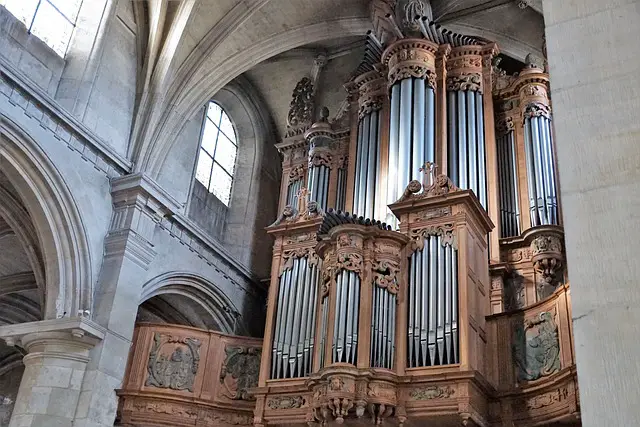
Le Havre, the resilient maritime city on the Normandy coast, offers a captivating blend of history, art, culture, and natural beauty. Its remarkable rebirth after the devastation of World War II stands as a testament to human ingenuity and the enduring spirit of reinvention. Whether you are drawn to its innovative architecture, cultural institutions, culinary delights, or coastal charm, Le Havre promises a unique and enriching experience that will leave a lasting impression on all who visit. So, set sail for Le Havre and discover the maritime enchantment that awaits on the shores of Normandy.
Outdoor Adventures and Natural Beauty
While Le Havre may be best known for its maritime and cultural attractions, the city also offers opportunities for outdoor enthusiasts to explore its natural beauty and surroundings. The surrounding region of Normandy boasts lush landscapes, rugged coastlines, and picturesque countryside.
One of the most captivating natural attractions near Le Havre is the Alabaster Coast (Côte d’Albâtre), which stretches along the English Channel and features dramatic cliffs, charming fishing villages, and stunning vistas. Hiking trails along the cliffs provide visitors with breathtaking views of the sea, while the coastal towns of Fécamp and Dieppe are worth a visit to experience the local culture and cuisine.
For those seeking a leisurely outdoor experience, Le Havre offers beautiful parks and green spaces within the city limits. The Jardins Suspendus (Hanging Gardens) provide a tranquil oasis with terraced gardens, exotic plants, and panoramic views of the city and the sea. It’s a perfect spot for a leisurely stroll or a peaceful afternoon picnic.
Waterfront Attractions
Le Havre’s waterfront is a hub of activity and a source of endless fascination for visitors. The city’s marina, known as the Vieux Bassin (Old Harbor), is a picturesque spot lined with colorful boats, historic buildings, and charming cafes. It’s a perfect place to take a leisurely stroll, watch the boats go by, or enjoy a meal with a view.
The beach in Le Havre, Plage du Havre, offers an opportunity to relax by the sea and soak up some sun during the summer months. The promenade that lines the beach is a popular spot for walking, jogging, or simply enjoying the fresh sea breeze. Water sports enthusiasts can also try their hand at windsurfing or kitesurfing in the clear waters of the English Channel.
A Journey Through History
Le Havre’s rich history is not limited to its post-war reconstruction. The city is also home to several historical sites and landmarks that provide insight into its past. One such site is the Fort de Sainte-Adresse, an 18th-century fortress perched atop a hill overlooking the city and the sea. It offers panoramic views and a glimpse into the city’s military history.
Another historical gem is the Maison de l’Armateur (Ship Owner’s House), a beautifully preserved 18th-century mansion that once belonged to a wealthy ship owner. Visitors can explore the elegant rooms and learn about the city’s maritime history through exhibits and artifacts.
Getting to Le Havre
Le Havre’s accessibility makes it a convenient destination for travelers. The city is well-connected by road, with major highways linking it to Paris and other cities in France. Additionally, Le Havre’s train station provides rail connections to various destinations, including Paris, making it easy to reach from both within France and abroad.
For international travelers, the nearest major airport is the Deauville-Normandie Airport, which is approximately 35 miles (56 kilometers) from Le Havre. Alternatively, the Charles de Gaulle Airport in Paris offers a wide range of international flights, and Le Havre can be reached from there by train.
Le Havre, with its maritime heritage, innovative architecture, cultural richness, and natural beauty, offers a multifaceted experience that appeals to a wide range of travelers. From the visionary reconstruction after World War II to the modernist architecture of Auguste Perret, from the Impressionist masterpieces at the MuMa to the flavors of Normandy’s cuisine, Le Havre captivates the senses and leaves a lasting impression.
Whether you come for a day trip from Paris or plan to spend more time exploring the region, Le Havre invites you to discover its maritime charm, immerse yourself in its artistic and cultural offerings, and connect with its rich history. As you explore this resilient city on the Normandy coast, you’ll find that Le Havre is not merely a destination; it’s a journey that unfolds with each new discovery, offering a truly unforgettable experience. So, pack your bags, set your course for Le Havre, and embark on an adventure that will leave you with cherished memories and a deeper appreciation for the beauty of the world.
